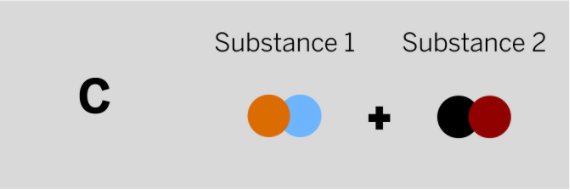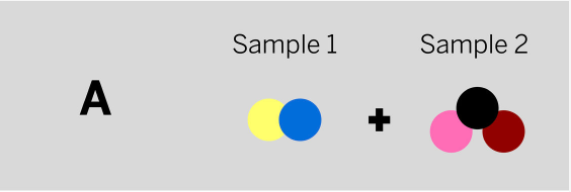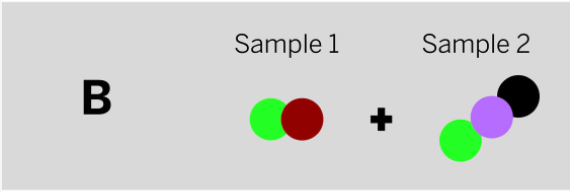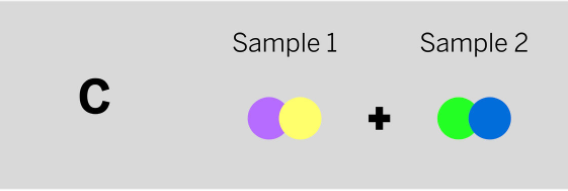
Amplify Chemical Reactions
Quiz
•
Science
•
7th Grade
•
Hard
+2
Standards-aligned

Lisa Thompson
FREE Resource
15 questions
Show all answers
1.
OPEN ENDED QUESTION
1 min • 4 pts

A chemist mixed two substances together: a blue powder with no smell and a colorless liquid with a strong smell. Their repeating groups of atoms are shown above on the left. After they were mixed, the chemist analyzed the results and found two substances. One ending substance had the repeating group of atoms shown above on the right. Is the ending substance the same substance as the blue powder? What happened to the atoms of the starting substances when the ending substances formed? Be sure to explain your answers to both of these questions.
Evaluate responses using AI:
OFF
Tags
NGSS.MS-PS1-2
NGSS.MS-PS1-5
2.
MULTIPLE CHOICE QUESTION
1 min • 1 pt

The diagram above shows the repeating groups of atoms that make up two samples. Will the properties of the two samples likely be the same or different? (Examples of properties are smell, color, and the temperature at which a substance melts.)
The properties will likely be the same because the repeating groups of atoms that make up the two samples have two of the same types of atoms.
The properties will likely be the same because the repeating groups of atoms that make up the two samples have the same number of atoms.
The properties will likely be different because there are more repeating groups of atoms in Sample 2.
The properties will likely be different because the repeating groups of atoms that make up each sample are different.
Tags
NGSS.MS-PS1-1
NGSS.MS-PS1-2
3.
MULTIPLE CHOICE QUESTION
1 min • 1 pt

Tiana is a chemist who is making a chemical to add to swimming pools in order to make the water safer. She mixed two solid substances together in a sealed container. The diagram above shows the repeating groups of atoms that make up the two starting substances.
After mixing, Tiana found two liquid substances in the sealed container. (Nothing had escaped.) Which of the diagrams to the left shows the repeating groups of atoms that make up the ending substances?




Tags
NGSS.MS-PS1-1
NGSS.MS-PS1-2
NGSS.MS-PS1-5
4.
MULTIPLE CHOICE QUESTION
1 min • 1 pt





Tags
NGSS.MS-PS1-1
NGSS.MS-PS1-2
NGSS.MS-PS1-5
5.
MULTIPLE CHOICE QUESTION
1 min • 1 pt

Santiago is a chemist working to make a new kind of antacid, which is a medicine that helps with stomach pain. He mixed two powdery solid substances together in a sealed container. The diagram above shows the repeating groups of atoms that make up the two starting substances.
After mixing, Santiago found two liquid substances in the sealed container. (Nothing had escaped.) Which of the diagrams to the left shows the repeating groups of atoms that make up the ending substances?




Tags
NGSS.MS-PS1-1
NGSS.MS-PS1-2
NGSS.MS-PS1-5
6.
MULTIPLE CHOICE QUESTION
1 min • 1 pt

Marisol mixed two samples together: a brown liquid with no smell and a colorless gas that smells irritating. She analyzed the results and found two ending substances. One of the ending substances smelled sweet. This ending substance is made up of the repeating group of atoms shown above. Which of the diagrams to the left shows the repeating groups of atoms that make up the samples Marisol mixed together?




Tags
NGSS.MS-PS1-1
NGSS.MS-PS1-2
7.
MULTIPLE CHOICE QUESTION
1 min • 1 pt

Jamie works at a company that makes cleaning chemicals. She is trying to make a chemical that smells like flowers. She took two samples that were gases at room temperature and mixed them in a sealed container. The diagram above shows the repeating groups of atoms that make up the two starting substances.
After mixing, Jamie found two substances that smelled like flowers in the sealed container. (Nothing had escaped.) Which of the diagrams to the left shows the repeating groups of atoms that make up the ending substances?




Tags
NGSS.MS-PS1-1
NGSS.MS-PS1-2
NGSS.MS-PS1-5
Create a free account and access millions of resources
Similar Resources on Wayground

13 questions
Amplify Chemical Reaction Unit
Quiz
•
7th - 8th Grade

15 questions
Chemical Reactions Amplify Review
Quiz
•
8th Grade

12 questions
Amplify Chemical Reactions Key Concepts
Quiz
•
7th Grade

12 questions
Chemist Analyzes Results and Finds Two Substances
Quiz
•
7th Grade

15 questions
Chemical Physical Change, Amplify
Quiz
•
8th Grade

14 questions
Amplify 7.7 Reactions: End of Unit Assessment
Quiz
•
7th Grade

16 questions
Chemical Reactions Vocabulary Quiz
Quiz
•
7th Grade

13 questions
Science Amplify Chemical Reactions End of the Unit Assessment
Quiz
•
7th - 8th Grade
Popular Resources on Wayground

10 questions
Video Games
Quiz
•
6th - 12th Grade

10 questions
Lab Safety Procedures and Guidelines
Interactive video
•
6th - 10th Grade

25 questions
Multiplication Facts
Quiz
•
5th Grade

10 questions
UPDATED FOREST Kindness 9-22
Lesson
•
9th - 12th Grade

22 questions
Adding Integers
Quiz
•
6th Grade

15 questions
Subtracting Integers
Quiz
•
7th Grade

20 questions
US Constitution Quiz
Quiz
•
11th Grade

10 questions
Exploring Digital Citizenship Essentials
Interactive video
•
6th - 10th Grade
Discover more resources for Science

10 questions
Exploring the Scientific Method
Interactive video
•
6th - 10th Grade

20 questions
Microscopes
Quiz
•
7th - 8th Grade

17 questions
7.6D Aqueous Solutions
Quiz
•
7th Grade

10 questions
Exploring Chemical and Physical Changes
Interactive video
•
6th - 10th Grade

20 questions
Photosynthesis and Cellular Respiration
Quiz
•
7th Grade

25 questions
Physical and Chemical Changes
Quiz
•
7th Grade

10 questions
Exploring the Basics of Density
Interactive video
•
6th - 10th Grade

16 questions
Photosynthesis and Cellular Respiration Review
Quiz
•
7th Grade















